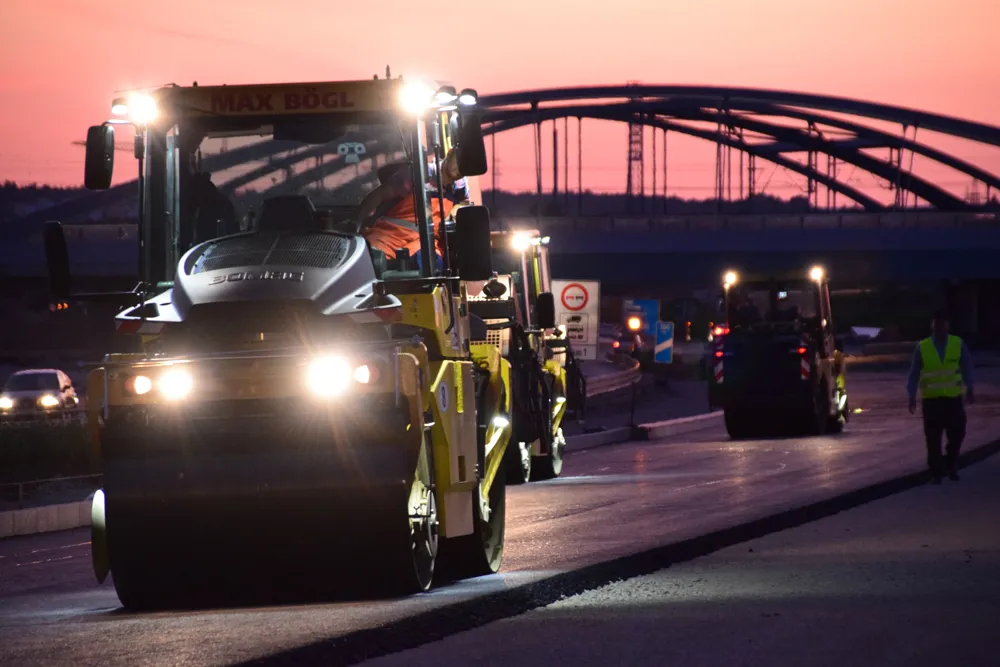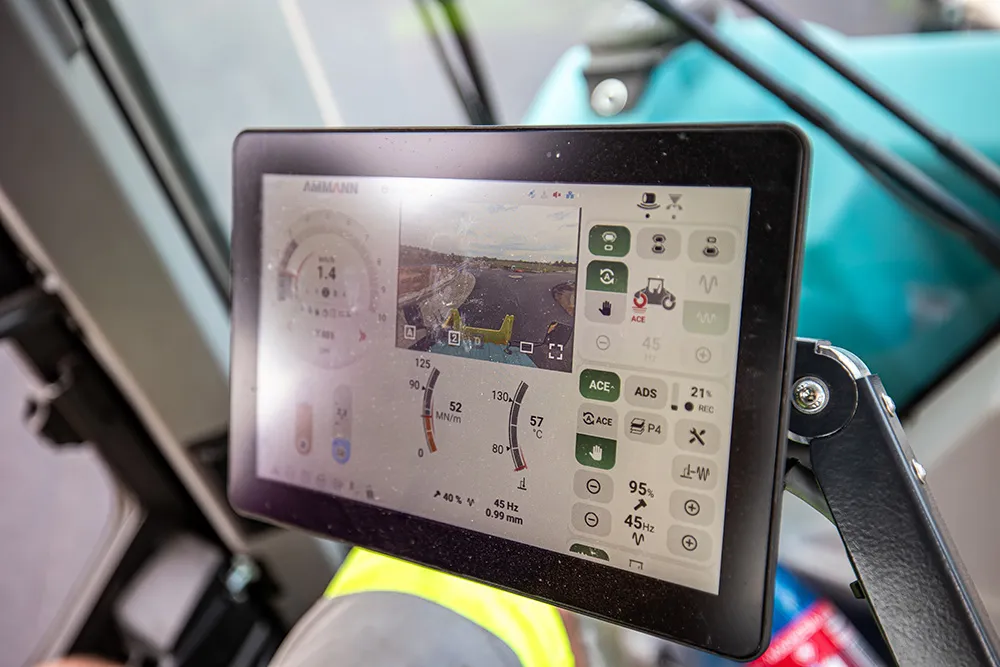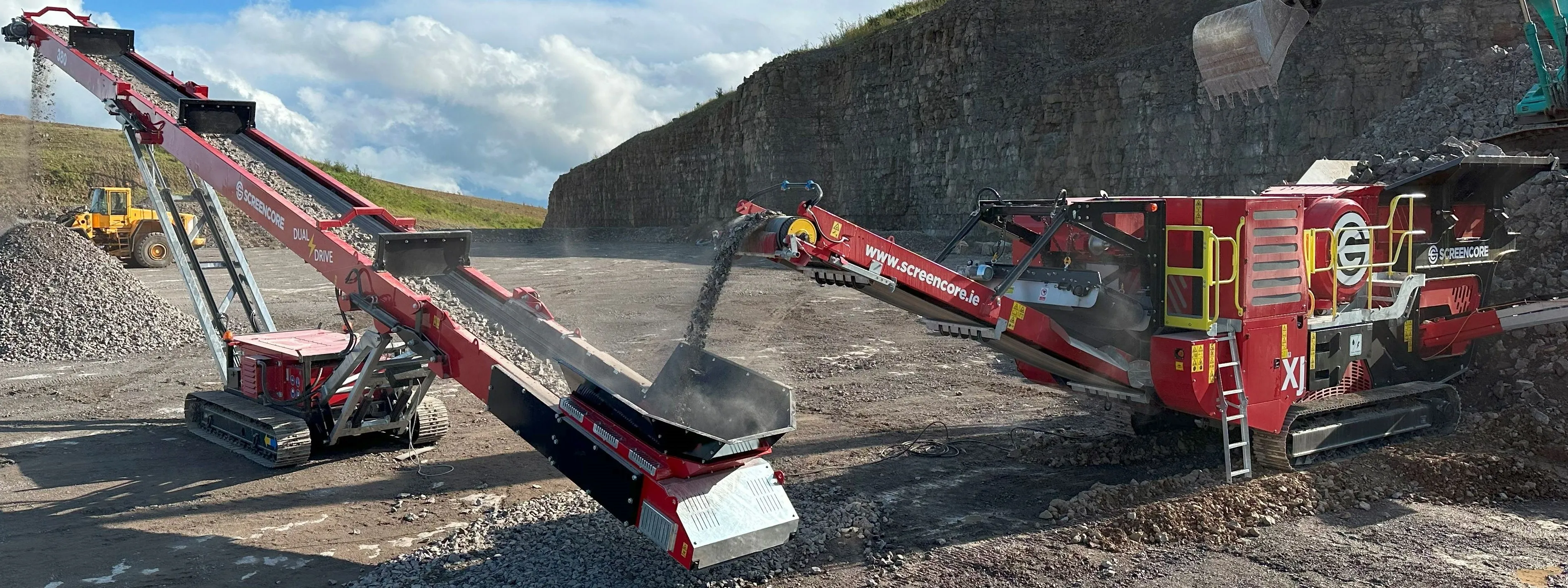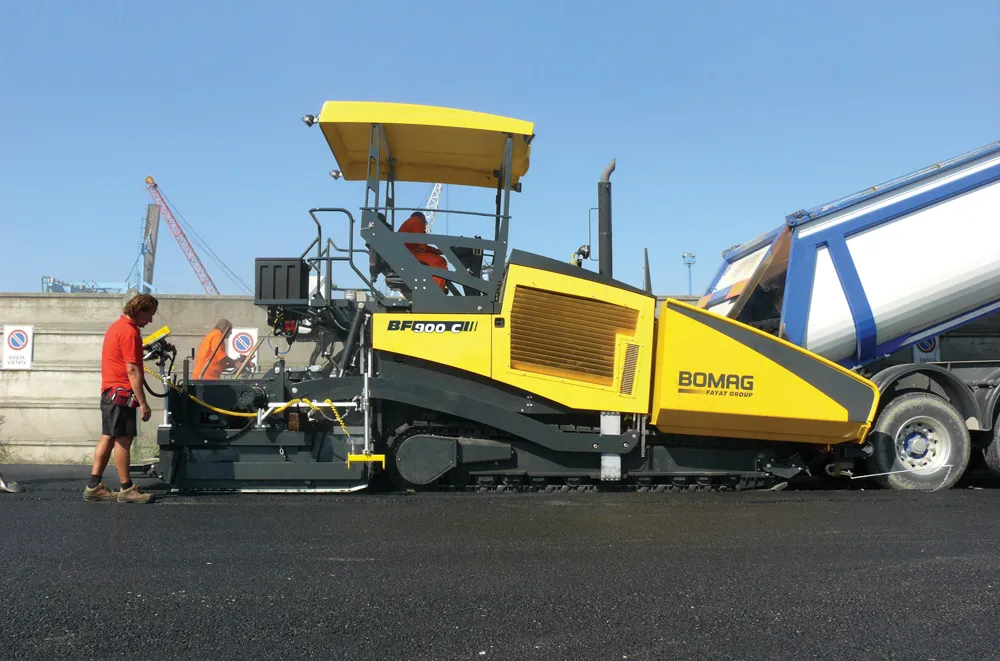
When the project is complete in late 2021, a total of 300,000m² of asphalt will have been paved at the Fürth/Erlangen interchange near Nuremburg. For this work, 2.4km of the A3 is being surfaced with porous asphalt, and 2.3km of the surface for the A73 is a low-noise stone mastic asphalt. This is one of the largest traffic projects in Germany and contractor Max Bögl, has opted to the latest compaction technology from BOMAG.
The Fürth/Erlangen interchange forms part of the six-lane expansion project of the A3 between the motorway junction Biebelried near Würzburg and Fürth/Erlangen. The flyovers from the A3 onto the A73 from the direction of both Würzburg and Nuremberg are being widened to two lanes to improve traffic flow. For this, the cloverleaf design is being replaced with two new constructions: the flyover and the underpass. After completion, traffic from Erlangen to Regensburg will be routed via the flyover without merging or roundabouts.
Max Bögl is testing two innovations from BOMAG, with the aim of boosting quality and efficiency. The contractor is a long-standing BOMAG customer and is testing the BW 174 AP Hybrid with Asphalt Manager and BOMAP. The pivot-steered BW 174 AP AM Hybrid tandem roller is intended to reduce fuel consumption and emissions, as well as to increase efficiency.
The BW 174 AP Hybrid’s drive makes the machines quieter and more economical. In addition, the integrated hydraulic accumulator offers power storage for peak power demand. It has the capacity to generate up to 100Nm and 20kW of additional power, which corresponds to a total output of 75kW and the level of its conventional sister rollers. In push mode, the hydraulic accumulator is recharged without the use of external energy. The combination of optimised diesel engine, hydraulic accumulator, automatic compaction control (Asphalt Manager) and BOMAP, make the tandem rollers a highly-efficient solution, as can be seen on the construction site at the Fürth/Erlangen interchange.
The BOMAP system was developed by BOMAG for roller drivers to support them. This free app can be installed like any other app on mobile Android devices. The firm says that its mobile solution shows in real time the areas that have already been compacted or still need to be compacted, and the machine position on the road section. The roller drivers are better able to manage their time and in addition, less fuel is required, machine wear is reduced, and the work is optimised.
For this test, the hybrid roller was equipped with an external GPS receiver to obtain information about the machine’s movements. The separate GPS receiver was positioned on the roof of the cab and then connected via Bluetooth to the tablet PC. For a direct comparison, a second tablet PC was installed in the hybrid tandem roller and located the machine’s position by means of the GPS receiver integrated in the PC. This method was also applied in the three other tandem rollers.
The field test was performed under normal night paving conditions. Around 3,000tonnes of base course were installed and compacted. During the initial hours of testing, the measuring results were constantly monitored.
The hybrid roller with an external GPS receiver was displayed with an accuracy of around 150mm. The position determination via the GPS receiver in the tablet PC resulted in deviations of 2-3m, providing only a rough orientation. The visualisation of the work results, in combination with the roller position, helped the drivers because visual orientation at night can be tiring and imprecise.
Using a tablet PC with a SIM card and BOMAP installed is sufficient for the connected construction site. To make it easier and more transparent for all parties involved in the construction process, as well as to provide safer documentation, BOMAG is launching its cloud solution. This offers the real-time integration of a paver, which will send its track as parameters to the rollers in conjunction with the mix temperature. As a result, all the drivers of the connected construction machines will have an overview of the complete project and/or the current construction phase. No additional hardware is required for this connected overview. A further advantage is that no additional software is required, because the entire application runs in the web browser. This, in turn, allows full documentation and analysis.









